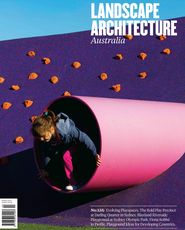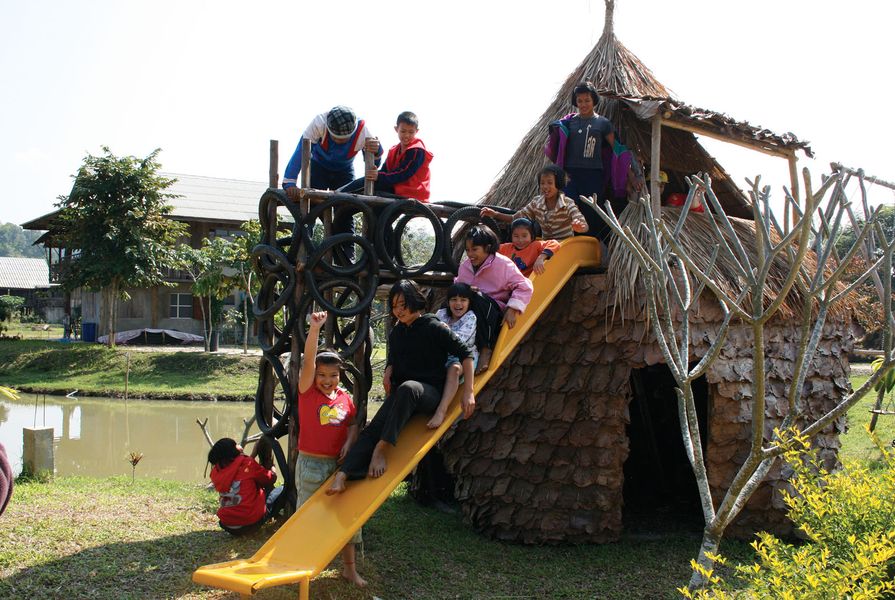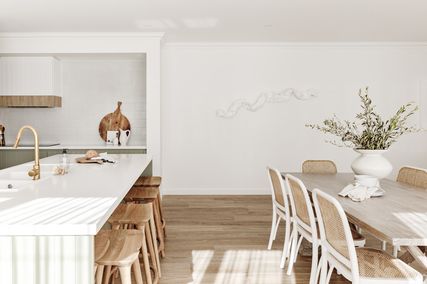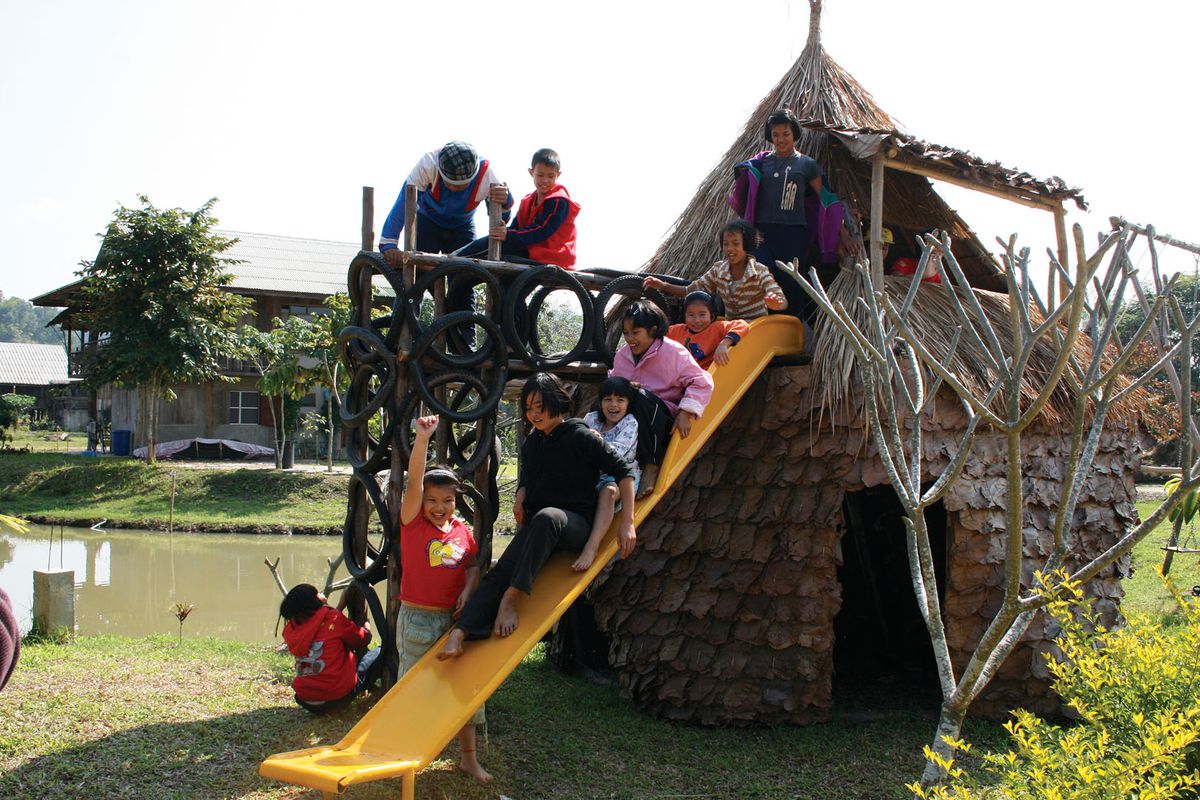Marcus Veerman was in Chiang Dao, Thailand, looking for something to do; something important, when the head of Makhampom, an organization that educates on issues such as AIDS prevention through the medium of theatre, asked if he’d build them a playground. Veerman came up with a design comprising two see-saws, two swings, a slide and a two-storey icosahedron cubby house thatched with leaves.
“All the materials were sourced from local shops,” says Veerman. “It cost around six hundred dollars. It was a great-looking project, but it’s pretty simple compared to the way we do things now.”
Before this playground was even finished, a local school principal approached Veerman. “This is just what we need for our children,” she told him. “But we don’t know where to start.” Within days, another playspace was in the works and within three months Veerman, along with interested architects, artists, locals and travellers, was building a playground every fortnight.
Eventually, Veerman realized that creating stimulating and creative playspaces – a resource we take for granted in the developed world – is important. “I realized that play, and space to play, is not simply a side issue in education, but is core in fostering a child’s natural way of learning cognitive, social and emotional skills.”
Veerman had previously been involved with an outfit called Hands on Learning, an Australian non-profit organization with programs in Victoria and Queensland that helps secondary schools deliver a program for students most at risk of leaving school early. Projects included building straw bale classrooms, canoes and bikes. While Veerman doesn’t have a design qualification, he has always been a maker: before settling on play, he experimented with low-cost solar hot water heaters, solar ovens and even a bamboo and linoleum fold-up canoe.
Playground Ideas went through several incarnations before Veerman, who is the only full-time, paid person on board, formally registered it as a non-profit organization in 2010. Since then, he and a rolling cohort of twenty or so volunteers – a mix of designers, architects, landscape architects, safety assessors, play specialists, lawyers and accountants – have helped to build more than one hundred playspaces in South-East Asia, South America and Africa.
“Play is important in the developing world because schools often have few resources and poorly trained teachers, which leads to teaching methods such as rote learning and call-and-response teaching,” says Veerman.
“This in turn leads to poor academic outcomes, but also has an impact on overall wellbeing. In many of the schools we work with, playgrounds are considered unaffordable. We’re working with communities to create sustainable, affordable solutions to change the culture of education and the design of schools to become more focused on children’s need to play.”
Funding for the playspaces comes from NGOs, private donors and the local communities themselves. Veerman is an advocate of ground-up development, educating and empowering locals to create their own playgrounds, rather than telling them what they need or importing Western designs. This means that each playground is customized to suit the local environment and community. In Thailand, for example, car tyres are free and plentiful, but in Uganda, where Playground Ideas recently assisted with a playground for the children of workers at St Monica’s Tailoring School – they’re not.
“Each playground begins with a community consultation and audit of materials to ensure design and construction of a playground that is culturally appropriate, has strong community ownership and is maintainable over time,” explains Veerman.
“It’s all good and well to come in and do something for a community, but what happens when you leave? If the cost isn’t affordable, the tools and materials aren’t locally available and the community isn’t involved, then how long will it be before the projects falls apart?”
In the beginning, Veerman was on the ground, and was closely involved in the day-to-day design and build. Now, he’s stepping back to a remote support and mentoring role, with the internet as intermediary.
Keen builders and designers can access all the resources they need online, with Veerman acting as a behind-the-scenes support. Many projects now involve local groups reading Playground Ideas’ manuals and downloading its free plans.
The website includes a Playpedia, a suite of resources for designers and builders that includes safety manuals and information about standards in different countries, playground designer tools and a library where designers can access designs and even upload their own. It’s not exactly child’s play, but it’s pretty darned close.
Source

Discussion
Published online: 6 Feb 2013
Words:
Vanessa Murray
Images:
Marcus Veerman
Issue
Landscape Architecture Australia, August 2012
















